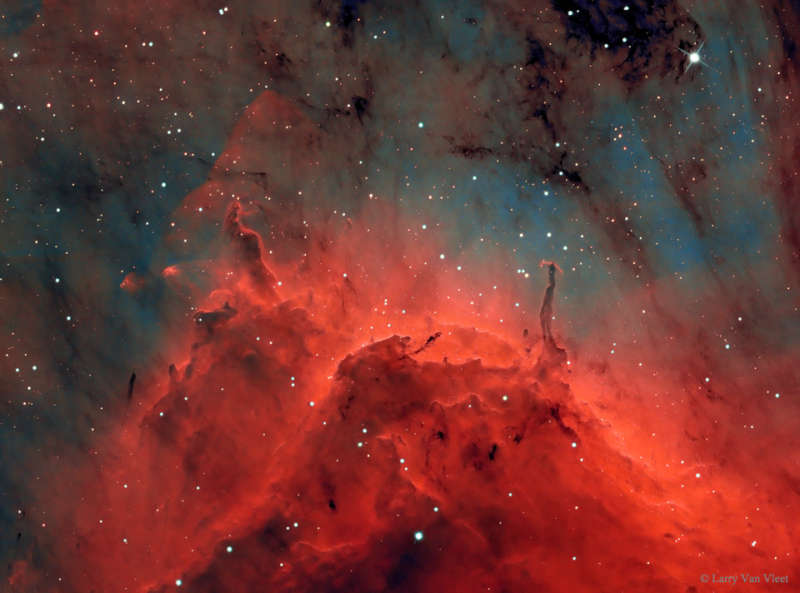Credit & Copyright: Larry Van Vleet
(LVVASTRO)
Explanation:
What dark structures arise from the Pelican Nebula?
Visible as a bird-shaped nebula toward the constellation of a bird
(Cygnus,
the Swan),
the Pelican Nebula is a
place dotted with newly formed stars but
fouled with dark dust.
These smoke-sized
dust grains formed in the cool atmospheres of young stars
and were dispersed by
stellar winds and
explosions.
Impressive Herbig-Haro jets are seen emitted by a star on the right that is helping to
destroy the
light year-long dust
pillar that contains it.
The featured image was
scientifically-colored to emphasize light emitted by small amounts of
ionized
nitrogen,
oxygen, and
sulfur in the nebula made predominantly
of
hydrogen and
helium.
The Pelican Nebula (IC 5067 and IC 5070) is about 2,000 light-years away and can
be found with a small telescope to the northeast of the bright star
Deneb.
1999 2000 2001 2002 2003 2004 2005 2006 2007 2008 2009 2010 2011 2012 2013 2014 2015 2016 2017 2018 2019 2020 2021 2022 2023 2024 2025 |
Январь Февраль Март Апрель Май Июнь Июль Август Сентябрь Октябрь Ноябрь Декабрь |
NASA Web Site Statements, Warnings, and Disclaimers
NASA Official: Jay Norris. Specific rights apply.
A service of: LHEA at NASA / GSFC
& Michigan Tech. U.
|
Публикации с ключевыми словами:
jet - Pelican Nebula - джет - Туманность Пеликан
Публикации со словами: jet - Pelican Nebula - джет - Туманность Пеликан | |
См. также:
Все публикации на ту же тему >> | |
